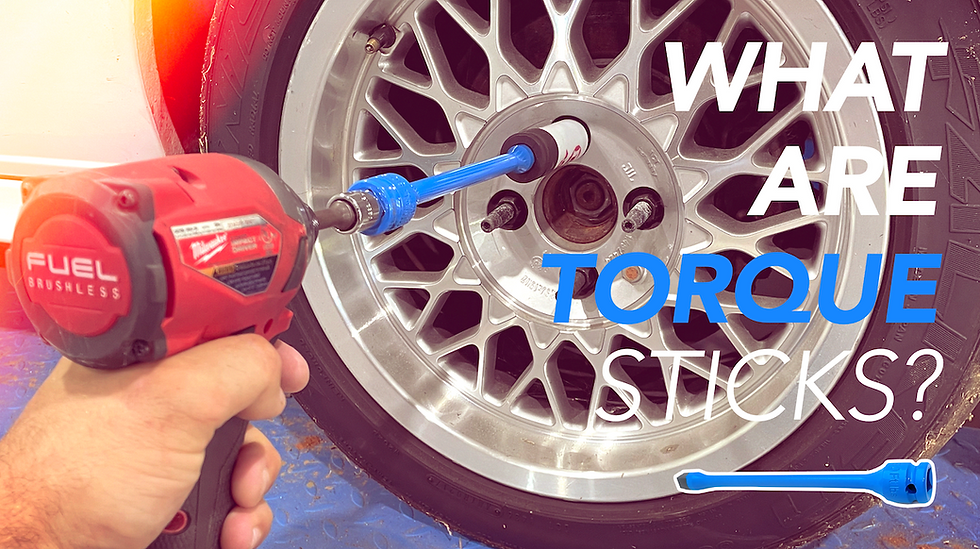USING AIRCRAFT KNOWLEDGE ON CARS
- Justin Schaub

- Dec 6, 2021
- 3 min read
Growing up, BMWs were not the only passion I had. If you have been following my company for a while you know I have a huge lust for aircraft as well. In fact, I went to college for aircraft maintenance and obtained my FAA airframe and power plant license (A&P). This license legally gives you the ability to work on US aircraft and sign them back into airworthiness. Many people ask me where I learned to work on BMWs. The answer is, I never had formal training on BMWs, but this is why learning aircraft maintenance is so cool.

Many mechanical fields in this country actually look for A&P mechanics even if the job does not pertain to aircraft. Disney hires tons to work on their rides, the marine industry looks for A&Ps to solve different problems on their ships, and NASCAR teams search out aircraft mechanics to join their team. You might be wondering why this is?
The reason is because unlike the automotive world which has a few systems in place in the cars, when you go to school for aircraft maintenance you learn about a wide array of subjects that can be useful in other industries. The entire aircraft has many different systems, materials, mechanics, and forces being applied to it. Some of the different areas you will learn as an A&P are electronics (digital and analog), hydraulics, aerodynamics, systems engineering, sheet metal repair, composites, power plant (engines) and more. By having a wide array of knowledge in all these fields, it can help you troubleshoot problems in different industries. Since most mechanical and electrical systems work the same, you can apply knowledge from aircraft into automotive pretty easily.

The FAA is like the government for the sky. It stands for Federal Aviation Administration. They hold the key to a lot of legal mumble jumble, but they were nice enough to provide us with a very useful book that is free. This book is called the AC 43.13-1B or Advisory Circular 43.13-1B. This book contains methods, techniques, and practices acceptable to the Administrator for the inspection and repair of nonpressurized areas of civil aircraft, only when there are no manufacturer repair or maintenance instructions. This data generally pertains to minor repairs.
Thats pretty cool, but you might be asking how it pertains to cars. The AC 43.13 may not be 100% applicable to BMWs, but it does have a lot of great practices and techniques that we can carry over into the automotive world. Let's start diving into some.
First, there is a lot of great information on tools and hardware, including how to properly use a torque wrench and identification of screws, nuts and bolts. This can become very handy as it is not only important to apply the correct torque to a fastener, but know what the fastener is used for. Not all hardware is the same. Some are structural (can hold a load), others are non structural (ie holding on interior panels).
A great torque value chart can be found on paragraph 7-43

On paragraph 7-52, we see various types of hardware

Another great section of the book is how to install safety wire. This is often not found in many street cars, but on high end race cars, and drag cars you will find safety wire all over. One of the most common modifications on a M5x engine is to install the safety oil pump nut. This nut is drilled and includes safety wire, but do you know how to install it properly?
Paragraph 7-19 goes into safetying, what it is, why its important, and how to perform the task.

The book is filled with tons of useful knowledge you can pass down to the automotive world and make yourself a better mechanic. Other great areas of interest in the book are:
Repair of plastics
Welding & brazing
Spark plug gap
Wiring & electrical
Identification of various metals
Hardness testing
Sheet metal repair
Composite layup & repair
Corrosion inspection
and more
This book is great to have on hand, or saved as a pdf in your phone or computer. I have referred to this book for many tasks over the years. Knowledge is power, and the better the mechanic you can become, the more sought after you will be. Master your craft, and become the guy/gal that people are referring to. Take pride in your work and have fun!
Click here to download the FAA Advisory Circular 43.13-1B
If you are interested in obtaining your A&P license there are various colleges around the country that offer the training. It is a very fun and informative education and even if you don't go into aircraft maintenance, you can use the knowledge in other industries to be a head of the competition.








Comments